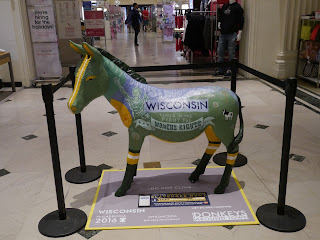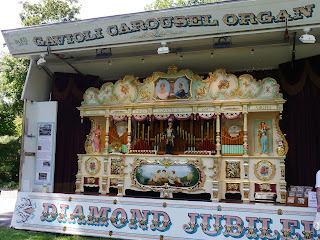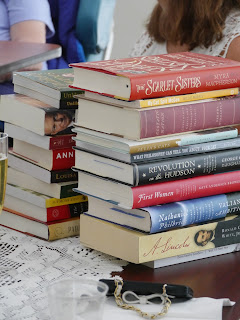HERE is a website to the different donkeys and where to find them. I don't know how long the link will be viable since the donkeys were only up from July 1 to August 23, but as of September 2, the website is still up and running.
On August 21 we realized time was running out and if we wanted to see them, we had to dash into Philly. Trouble is by the time we came home from church, ate lunch, and drove into Philly we only had a couple of hours left before a big storm was heading into Philadelphia. Did I mention there were 57 of them and they were spread ALL OVER the city?
We looked at the map and decided to park near the Kimmel Center and see as many as we could see in two hours. What really saved us is I downloaded the app. Last May Ashley and I moved into the 2000s and bought our first Smart Phones (iPhone 6S). Don does not have one, but does pay our bills. The app was an invaluable resource for finding the donkeys.
I have photo proof we found 22 of them (I won't put all of their pictures here), plus we found the locations of at least four more (Delaware, New Jersey, Alabama, and Pennsylvania) that were already taken down before our trip. Story has it New Jersey's came with a broken face, which needed to be repaired before it was auctioned off. Not bad for the two hours we spent on this quest.
As we walked past each one we thought of friends and family living in those
places. Democrats Abroad made us think of Wendy and Dave as they move from Fiji to Indonesia. California reminded us of our many friends from Disneyland, and Dave and Lisa. Ohio certainly made us think of the Smith Family and their strong ties to the Democratic Party. Even when we saw ones from states where our Republican friends live, we thought of them fondly.
 Most were outdoors, visible all the time. A few were indoors, such as Wisconsin is inside the former Wanamakers (now a Macy's). Most were alone, but in some cases there were two next to each other. No idea how they chose which state went where.
Most were outdoors, visible all the time. A few were indoors, such as Wisconsin is inside the former Wanamakers (now a Macy's). Most were alone, but in some cases there were two next to each other. No idea how they chose which state went where.  California's donkey had to be moved for the safety of the donkey. It had been out in the open, but was moved closer to a hotel so the bell hop could keep an eye on it (and take pictures of tourists with it). Seems too many adults were trying to ride the donkey statues. Yes, adults.
California's donkey had to be moved for the safety of the donkey. It had been out in the open, but was moved closer to a hotel so the bell hop could keep an eye on it (and take pictures of tourists with it). Seems too many adults were trying to ride the donkey statues. Yes, adults.Each donkey is unique. Each one highlights something about that place. Both sides of the donkey are painted (something we did not notice with the first one we saw because it was up against a building). Wishing we had spent more time with each donkey. It really could have turned into great lessons on states and what makes each one special.
We walked out near the Liberty Bell and up to Franklin Park. On our walk back to the car we started to get wet. Then it poured and we got drenched. We looked at the map and made a quick detour to see Ohio's donkey, after all my Ohio family are among the most politically active people I know. It was worth the detour, plus I got to see dinosaurs (no, I am not delusional). I only wish they were out longer in order to have a better shot at seeing them all.


















































